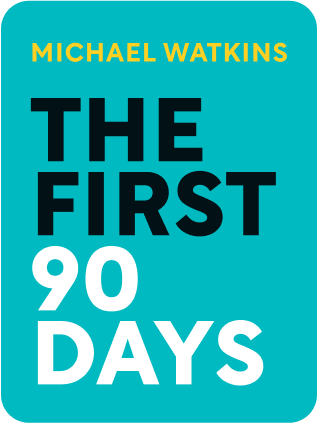

This article is an excerpt from the Shortform book guide to "The First 90 Days" by Michael Watkins. Shortform has the world's best summaries and analyses of books you should be reading.
Like this article? Sign up for a free trial here .
How do you prepare for a professional transition? What are some things you can do to better integrate into the new role or a new organization?
The key to a successful professional transition is to proactively prepare in advance by anticipating what challenges you will be facing and how you’ll handle them. Whether it is a promotion to a new role in the same company or a starting position in another organization, preparing in advance will make a world of difference in how you’ll perform in it.
Here are some tips on how to make your professional transition as smooth as possible.
Navigating a Professional Transition
The key to setting yourself up for success in a new role is to proactively prepare yourself for the transition. Do not rest on your laurels and assume that you can merely keep doing what you were doing before. Start by properly identifying the kind of professional transition that you are undergoing (promotion or entering a new company) and then confronting the unique challenges that you might face as a result.
Promotions
Promotions represent a great recognition of and reward for your hard work. But you are also forging a new path and want to set yourself up to exceed the expectations of those who elevated you. Consider these key principles as you prepare for your new responsibilities:
- Balance details with the big picture—With more authority, you’ll now have greater insight into the inner workings of your company and the many moving pieces. Shift your perspective to fully understand the broader range of issues that are likely before you, but do so without getting overextended and pulled in a million directions.
- Re-approach your strategy for delegation—Your success as a leader will depend on developing competent and trustworthy team members. Crucial to that development will be a thoughtful approach to delegation. What should be delegated and to whom might look very different now that you are in a higher leadership role. Depending on the size of your new team, for example, you may be delegating small concrete assignments or entire products or processes.
- Exert your influence wisely—While it might seem like a promotion is conducive to having more influence, your choices will now be perceived more politically and those choices will often be far more complex. Additionally, you are now in a different echelon of peers who are all driven, ambitious, and talented—they are also trying to exert their influence. Egos may be in conflict and thus you’ll need to build alliances to support your choices (more on this later).
- Stay connected at all levels—Don’t get too isolated at the top by failing to stay informed about how things are going on the ground level. Prioritize regular communication with those who have direct insight or exposure such as customers or frontline employees (e.g., salespeople). Just as it’s important to receive information from a wide spectrum of channels, so too do you want to disseminate your vision and messaging diffusely. Use your team as a resource to communicate your goals across the company by relying on regular town-hall check-ins or using consistent and strategic emailing.
- Thoughtfully build your leadership brand—A promotion means more exposure and scrutiny. What kind of leadership presence do you want to establish and convey? How do you think about what reputation you want to build and ways to inform that reputation effectively?
Joining a New Company
Lateral moves into a new organization and culture carry their own unique set of challenges. At a new company, you’re not yet privy to the informal culture of communication and decision making, and this can create a credibility gap. To help your transition into a new company focus on these four things:
1. Business Orientation: Orient to the new company by holistically informing yourself about the many facets of the business. This is not limited to strategy and vision but should include concrete components such as brands and products, operating models, and talent management systems. Some ways that you can dig into these pieces include:
- Gathering publicly available information (e.g., financials, brands, strategy websites, and analyst reports)
- Asking for the company to put together a formal briefing portfolio if it’s appropriate for your level and position
- Touring key facilities
2. Stakeholder connections: Don’t lose sight of the many horizontal stakeholders of your work, including peers and other key constituencies impacted by your role. Invest in those relationships, not just the vertical relationships such as direct reports and bosses. Potential steps for developing those stakeholder connections include:
- Asking for introductions to important stakeholders early on—perhaps before you even officially begin
- Continuing to set aside space in your calendar for those meetings throughout the onboarding process
3. Aligning expectations: Don’t assume that the expectations articulated during the recruitment and interview process are etched in stone. It’s possible that during that process your role was framed to reflect a vision that would be most compelling to you. That vision was not necessarily false, but it may manifest differently on the ground. So remember to clarify and re-clarify expectations about your role both with your boss and with any other key actors that might contribute to your evaluation process. To help achieve this alignment consider scheduling a formal expectations check-in meeting with your boss early on (see Chapter 4 for more advice on this topic).
4. Adapting to the culture: Think of yourself as an anthropologist seeking to understand a new culture. What is culture? Culture represents a shared set of assumptions and values that inform communication, thinking, and behavior. Visually and superficially this may manifest through symbols (such as organizational logos), language (such as acronyms), or dress (don’t assume your company does casual Fridays just because your former company did). However, it will take time to develop an understanding of deeper cultural norms such as how recognition is doled out, what role team meetings play in the company’s ethos, and so on. Still more challenging will be gaining insight into the unstated assumptions that inform your company’s culture (such as how power is created and disseminated). Try these steps to learn more about the company’s culture early on:
- Ask explicit questions about the company’s culture starting during the recruitment and interview phase.
- Engage your boss and HR regularly to ask follow up questions about what you have observed regarding the company’s dynamics.
- Identify people who seem to have their finger on the pulse. Use them as resources/cultural interpreters.
As you seek to learn more about your company’s culture consider evaluating these facets:
- Influence—Who has influence over the dissemination of resources or how support is built for essential projects?
- Meetings—Are these substantive and crucial for actual decision-making? Or are they mere formalities where next steps are rubber-stamped?
- Execution—What is key to executing effectively? Knowing the right people? Or engaging in the right processes?
- Conflict—Are there cultural tendencies towards conflict avoidance? Or do people feel comfortable raising challenging issues without catalyzing resentment or retribution?
- Recognition—Who gets promoted/celebrated and why? Are there other recognition mechanisms to encourage those who might work quietly but effectively within teams?
- Ends versus means—As the company works towards established goals are there stated or unstated restrictions about the methods that can be used to achieve them? How are the company’s values integrated (or not) into that process?
Preparing for the Transition
Now that you understand the type of transition ahead of you and the unique challenges you may face, you must personally ready yourself for the move. Many individuals will mistakenly assume that their success up to this point is sufficient to propel their success in a new role, but this isn’t always the case.
Take, for example, Julia, who, after eight successful years in the marketing division of her company, was promoted to the role of launch manager for a new product. Unfortunately, Julia didn’t prepare for the fact that her new position would require a broader range of competencies such as delegation and an ability to fold distinct groups into the planning and decision-making processes. Relying on her previous tendency to micromanage, Julia alienated key members of her team and eventually was pushed out of the leadership role.
Julia’s experience reflects the importance of proactively planning and preparing for your new role. To make that transition more effective, consider applying these principles:
1) Psychologically make a break from your old job. There may be some overlap as you wrap up one job and prepare for another. For this reason, it’s important to mentally and symbolically reorient to the new role. Consider having a small celebration to officially demarcate the move. And set aside explicit time to mentally visualize and commit to the transition and to process the demands it will make of you.
2) Identify your “problem preferences”—these are the areas where you’re naturally inclined to step-in and get the work done. Maybe it’s one substantive area like marketing or finance. Such a tendency has probably resulted in a strong and clear development of skills related to that area.
But be careful not to become too adept in one area at the expense of others. Explicitly identify the tasks that you are drawn to and those you are not (e.g., relationships with customers, budgeting, employee morale, and so on). Similarly, evaluate whether you naturally orient yourself to certain substantive areas such as human resources, marketing, finance, operations, or research and development. Use this process to identify your potential blind spots and consider buttressing your areas of vulnerability by:
- Increasing your self-discipline
- Using team-building and support
- Asking for advice and counsel from individuals with different problem preferences than your own
Finally, beware your strengths. Qualities that were strengths in your old role could be weaknesses in your new role. For example, your execution and substantive expertise in your last role may have been impeccable, but now you’ll be supervising individuals in that role and may have a tendency to micromanage their work because you think you could do it better.
- Be prepared and open to learning—Your new role will invariably make new demands of you. Insecurities may arise as you feel less skilled and less competent in your new position. Be careful not to let that insecurity fester and transform into defensiveness and denial that keeps you stuck in spaces where you feel safe and affirmed. Instead, work on being adaptable and open to growing into the new role—even if it means making some missteps early on as you develop the necessary skills and insights.
- Expand and restructure your mentoring network—As you move into positions of leadership, your skill sets will need to include greater adeptness politically and personally. Seek out advisors who can support you in those areas specifically.
- Be prepared for the possibility that not everyone will be committed to seeing you succeed—Your old boss may be disappointed or frustrated to let you go. Set boundaries with her and clear expectations about what tasks you will and will not continue to undertake during the transition process. Alternatively, peers whom you beat out for a promotion may be resentful and resistant to your new authority. Set a tone early on by confronting such tensions directly but fairly and by establishing clear boundaries that reinforce the nature of your new role within the team.
- Access available resources early on—Many companies will have tools to support the onboarding process such as trainings or coaching. Use those to prepare yourself. Even if those options do not exist, use the 90-day plan as a mechanism to outline your transition vision with your boss and HR.

———End of Preview———
Like what you just read? Read the rest of the world's best book summary and analysis of Michael Watkins's "The First 90 Days" at Shortform .
Here's what you'll find in our full The First 90 Days summary :
- A field guide for anyone undergoing professional transition
- How to develop strong relationships with your new colleagues
- Why early wins are so important






